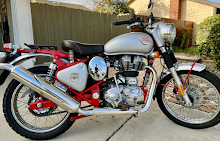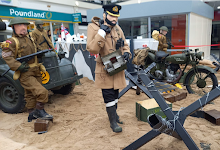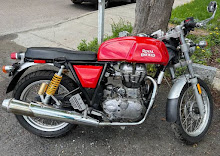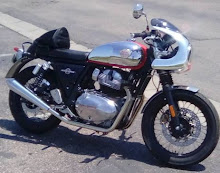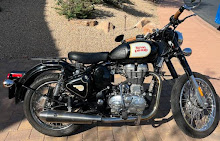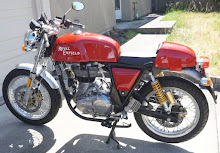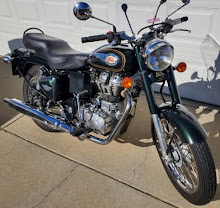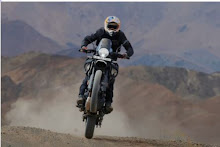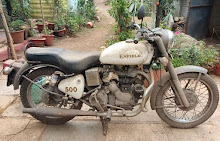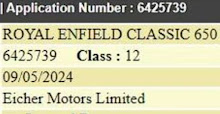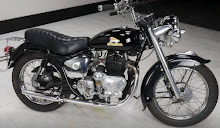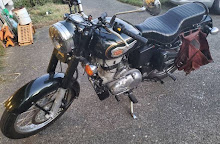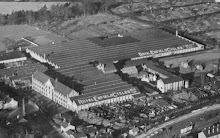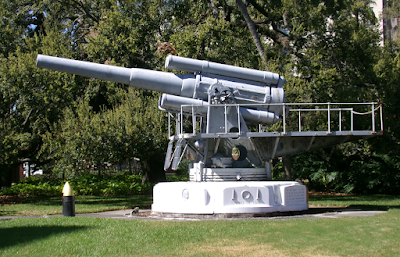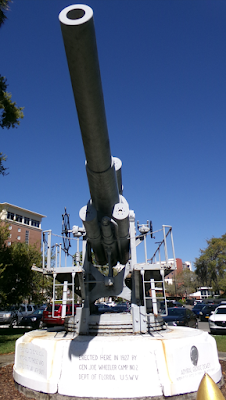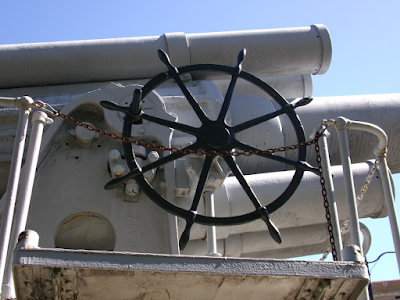 |
| Why is this man smiling? Me fixing my Royal Enfield on the sidewalk. |
Pushing my broken down Royal Enfield Bullet home earlier this year, I was secretly pleased.
I had finally earned a place in the imaginary club of vintage motorcyclists, in which every member has a story to tell about pushing a motorcycle home.
My wife, who arrived in our car to bring me a drink of water, was filled with pity. It was misplaced. I wasn't sad, I was happy.
At last, I had the right to tell the lads down at the pub the story of how I pushed my Royal Enfield two miles.
Except... there is no pub. I have no "lads."
That's my fault. For one thing, I waited until I was 50 to buy my Royal Enfield. For another thing, I had waited until I was 73 to push it home!
Most story tellers boasting of going home on shoe power describe events of their youth. Older and wiser, a break down late in life would inspire them to call a truck to collect the motorcycle.
Not me.
I wanted to experience the ups and the downs of riding an old-fashioned motorcycle, and have stories to tell.
Stories like the one Graham Scarth of the Royal Enfield Owners Club (UK) told me years ago, in an email.
"Back in 1970/71 I had a Norton Twin as well as the (Royal Enfield) 250 GT," he wrote.
"Coming home from the Yorkshire coast one evening on the Norton, it suddenly lost all drive in the bottom of a dip just as I opened the throttle to climb the rise. Coasted to a halt and put the bike on stand. Rear chain was laid out in a straight line on the road some yards back and no damage to engine/gearbox cases. No damage to me either from what could have been a nasty incident.
"Pushed the bike about a mile to the nearest pub and phoned a mate with a van, then had a pint or two whilst I waited."
What a wonderful story. And, of course, it ends at a pub.
When I started this blog, in 2008, I visualized it as a fictional soap opera built around a mythical biker bar I called the Three Down, somewhere in America.
I wrote nine episodes before admitting that I am not a novelist. You can read them here. But I wouldn't.
I wrote the soap opera shortly after I retired and I was missing the companionship and drama of the office. I was also missing the fun of commuting to work on my Royal Enfield. A blog seemed like a partial answer to these losses then, and it still is.
Because, truth is, dear readers, you are collectively the lads, and this is the pub. Bottoms up and may there never be a Last Call.


